Football and Doping
In addition, competition controls are always negative, drugs help nothing in collective sports and sports journalists wait and catch.
However, since 1958 G. According to sports physiologist Ottani, 27% of Italian first division soccer players receive amphetamines, 62% cardiopulmonary analeptics and 68% hormones and organic hormone extracts. Mr. Franck Buckley, head of the Wolverhampton Club of Great Britain, and his coach Jimmy Stewart, have confessed that they were forced to inject glandular extracts with human hormones at the England Cup in 1939 before playing against Portsmouth. Therefore, it is not today in the morning.
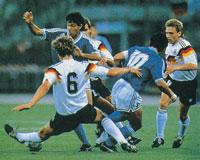
In 1962 three players from Milan (Bicycles, Guarneri and Zaglio) were doped sentenced for two matches. The following year, in the match Naples Milan, seven players from Naples found remains of amphetamines. In 1968, an 18-year-old boy, Jean Louis Quadri, died suddenly in the stadium of Saint-Egrève, next to Grenoble, and after the analyses that were made, found remains of amphetamines. In 1975 the footballer “Tonono” died in the countryside, blocked by drugs. In 1991 the Belgian Luc de Rijck died in the house of doctor Michel Van Deun of Turnhout, when he injected oxygen-enriched blood.
Every year there are deaths in football. Amphetamines, cocaine, ephedrine, analgesics, narcotics, anabolic agents, etc. are in stadiums.
As soon as they appeared in pharmacies to cure diseases, depressants or stimulants, cardiorespiratory analeptics, morphine or digitalin began to be used quickly in other areas. Amphetamines and anabolic androgens have been used since 1960 for doping. In 1992, a renal hormone called erythropoietin is marketed for the breeding of red blood cells, which some Italian doctors have recognized experimenting with professional athletes since then.
In the anti-doping tests, football people have tested positive. Some names are: Pascal Olmeta (SC Toulon), Franz Beckenbauer (Bayern de Munich), Hans Josef Kapellmann (Cologne and Bayern), Willie Johnston (West Bromich Albion), Pierre Littbarski (Matra Racing)...
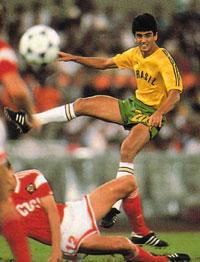
According to physiologist François Ruff, doping leaves no sport behind. Whether it's skill or not, long or low duration, you don't care. In fact, doping forms can be chosen, taking repeated doses depending on the desired effects or mixing different products.
One of the causes of not doping in football is that it is detrimental to getting the desired results. Others argue that in the analyses they do not catch anything, but before defining what doping substances are. Amphetamines, anabolic steroids, and caffeine, for example, are considered doping substances, but there are other doping systems such as blood self-transfusion, oxygen intake, or low-pressure room stays.
The International Olympic Committee also includes many other substances, but it should be noted that new products (human growth hormone, erythropoietin, chorionic gonadotropins, etc.) change on many lists. because they appear at any time.
When doping is prohibited, athletes walk in silence and in trap. Markus Einberger, with the Austrian high jump mark in 1986, acknowledges that he was doped in training. He said: Doping is like the secret within the company. Everyone knows what happens inside, but nobody from outside has known anything r. And the same in football. In the words of international footballer Harald Schumacher: Like any other sport, football has not escaped the claws of doping. The difference is at one point: it is not mentioned at all. It is the state secret, the taboo.

Some say that for football it takes clarity and mental agility and that does not correspond to doping. However, there are many factors that, apart from drugs, reduce the brightness of the head: stress, anxiety, dismotivation, hatred of the enemy or pain, for example. But different drugs (sedatives, psychostimulants, antalics, narcotics) stop or make these negative elements disappear. According to Stans Bowles of Queens Park Rangers, he took stimulants and sedatives, and the rest of professional players did the same.
However, a great skill is needed to play football well, and some argue that doping skill decreases. The answer to this argument is that doping can improve player concentration and thereby increase skill. Amphetamines and other stimulants prevent the feeling of fatigue. In addition, anabolic steroids and growth hormone enhance muscles, technically improving player strength and speed. In the event of a player's injury, you can take antalics, local anesthetics, and corticosteroids that eliminate the feeling of pain to return to training as soon as possible.
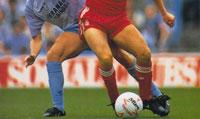
Joël Bats, a former international footballer, says that football is not a solo sport and that teamwork is a sport in which the doped player can benefit. On the other hand, for each positive case, cases with denial are very abundant. In team sports, therefore, doping does not favor.
But that also has its answer. In the United States he is very fond of basketball and is a team sport, but players often put their nose in the dust. Many of them have been subjected to signs of cocaine in their studies. Mr. Pierre Poty, doctor of the French team AS Saint-Etienne, says that if the player takes stimulants in the case of nerves, on the one hand he will have greater attention, greater intelligence and on the other a greater confidence in himself.
And if the stimulants are taken by the twelve, everyone will feel improvement. Perhaps that’s why, in 1954, West German players took the injection glucose at the Bern World Cup, or the “heavy coffee” when French team players played against Germany in 1973, or the carnitine in 1982 when the Italian team played the World Cup.
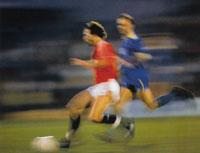
Another argument of those who say that there is no doping is that doping does not conform to the physiological limits of football. In the match the soccer player runs between 10 and 12 kilometers on average: two or three sprints, between 4 and 8 kilometers running and one or two kilometers walking. The resistance is therefore the characteristic that the player must have (the average consumption of oxygen is about 60 ml/min/kg). But there are actions (address changes, blocks, jumps, etc.) that require strength and speed.
Notwithstanding the foregoing, each of the aforementioned limits may be exceeded by the correct selection of doping products. Taking testosterone or injecting anabolic androgens can produce a great ‘march’ for 90 minutes, despite the harmful effects on hormones and muscles. There are also blood, cocaine, and ephedrine transfusions. Amphetamines are used to increase self-confidence and courage.
Another reason to argue that there is no doping in football is that of controls. The French Football Federation, for example, in 1992 conducted 228 checks on the players and found nothing positive. In 1991 UEFA captured two of the 270 doped players and in 1990 only one positive case in 224 controls. Therefore, in a survey conducted in France in 1993, the most doped sports were, according to people, athletics (85%), cycling (72%), swimming (71%)... Football was eighth (10%), after tennis (12%).
But comparing doping controls to soccer players with those of other sports, they are very few in proportion. In France, for example, in 1986, 1,260 cyclists and only 52 footballers were analyzed. In 1993, 707 athletes and 397 footballers were analyzed (only 4.9% of year-round controls). That is why the Belgian sports doctor André Noret has recognized that few players have tested positive because soccer players are not controlled. It is true that until 1987 the controls were held in European competitions and world competitions, every four years.
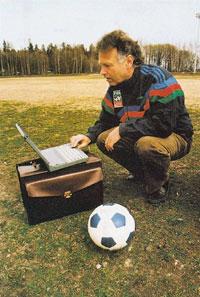
Doing so little control is not understandable. Even less knowing that football is the sport with more professionals. In 1993, for example, 397 controls were carried out, despite the total participation of 1,915,836 professionals in football. This means that controls have been performed at 0.02%, but we know that for controls to be effective they must be unforeseen and proportional at least 5% (10% better). However, controls are not often performed unexpectedly. Before starting the match between Toulouse and Bordeaux in the French Cup in 1986, Tolosarra player Alberto Tarentini informed the other Bordeaux that the control was going to take place. On the other hand, anti-doping control must be carried out with strict compliance with a specific procedure to avoid fraud and claims.
In practice, however, this procedure is not met in many cases. In 1988, for example, players designated by lot in the control conducted in Marseille knew that they were going to perform a previous analysis (and that the rest could also circulate peacefully). Other times urine samples are not taken care of or the doctor who will take the sample is not usually present when the player pix. That’s why Brazilian footballer Arthur Coambra ‘Zico’ said that when someone didn’t want to urinate for control a sample of another player was donated, and that sometimes there was a team that had played against helping.
Also, when it is said that the player has not given positive when making control, it must be clarified that there are products that have not been found, but may have others that are not yet detected. Coramine, for example, began to be detected in 1974, anabolic steroids (and not all) in 1976, beta-blockers in 1986, diuretics in 1987, etc. But there are still substances that are not detected in the urine: erythropoietin, natural corticosteroids, hGH or growth hormone...
That is why there are those who say that in addition to the urinalysis the blood must be done, but not all problems can be solved. For example, the President of the British Olympic Committee, Sir Arthur Gold, believes: If the controls are similar to the current ones, we will only catch those who have not been prudent and have been poorly recommended.
Buletina
Bidali zure helbide elektronikoa eta jaso asteroko buletina zure sarrera-ontzian











